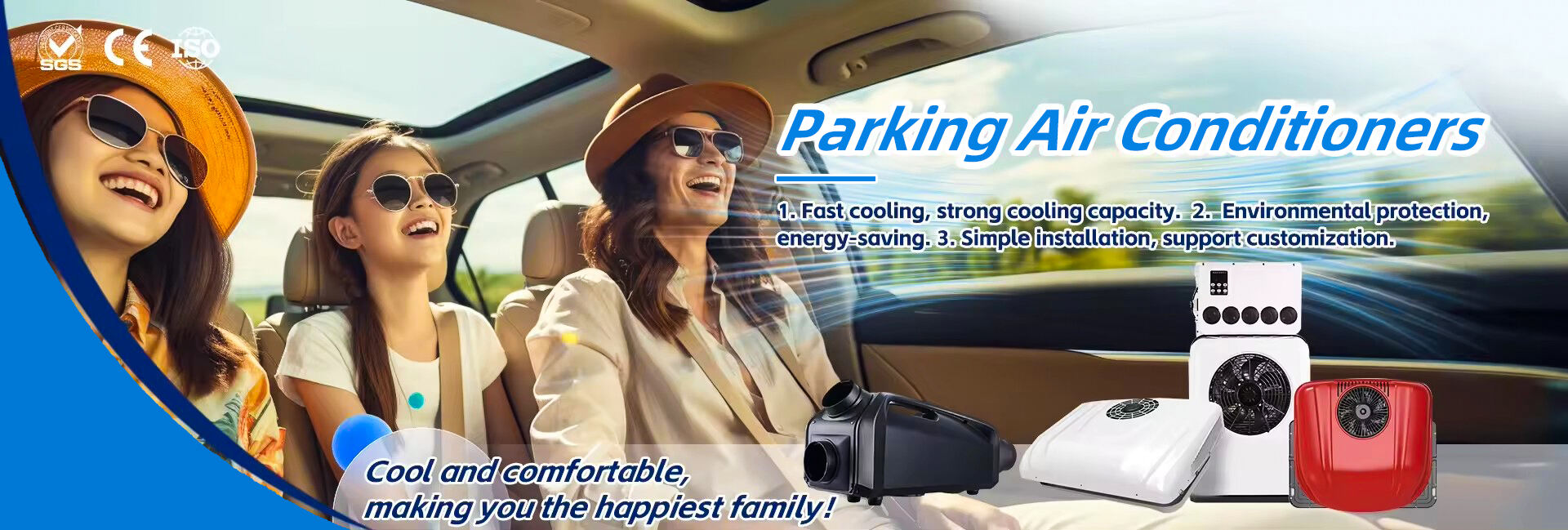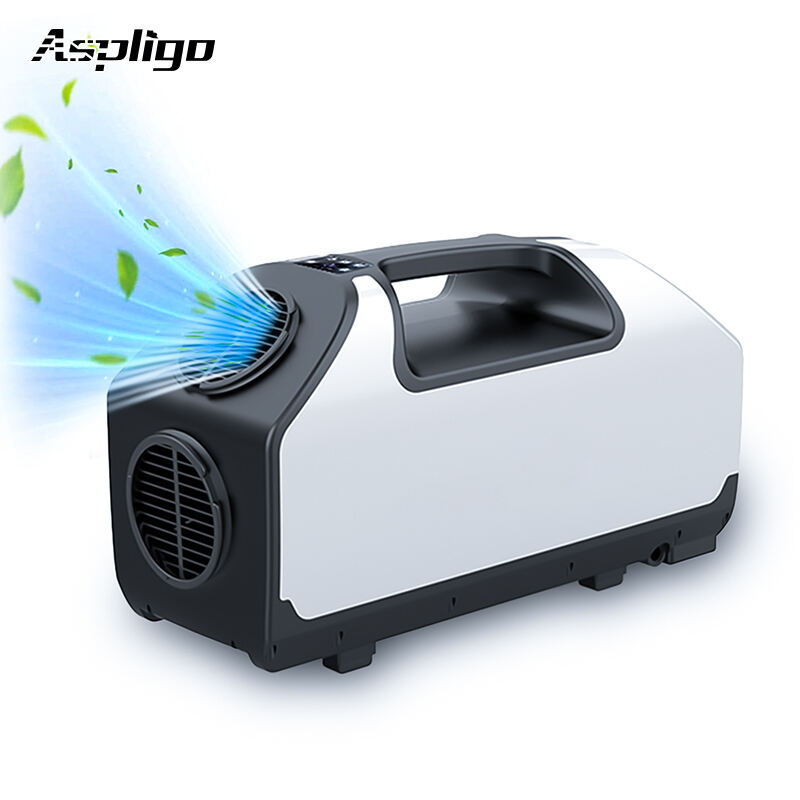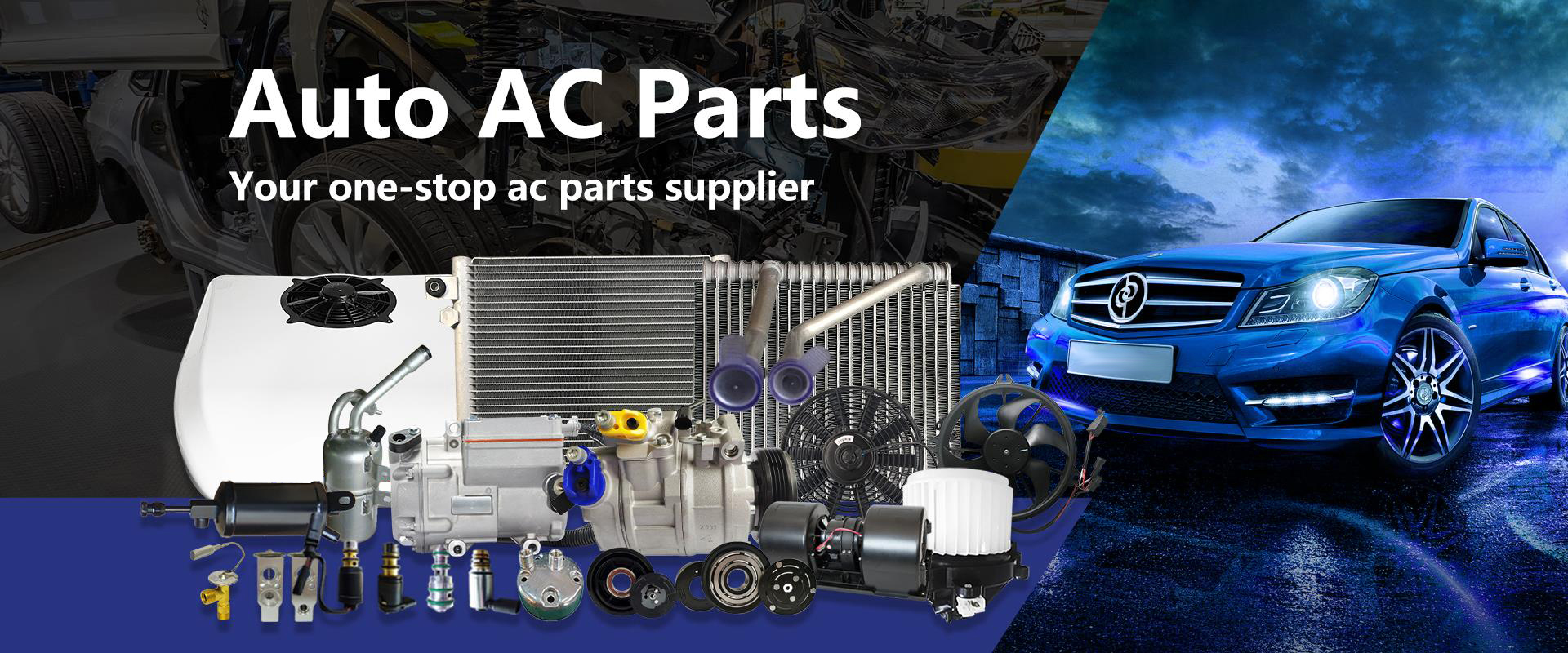All You Need to Know About Portable Air Conditioning for Vehicles
Benefits of Portable Air Conditioning for Vehicles
Flexible Cooling Solutions for Road Trips
Portable air conditioners provide flexible cooling options across all sorts of vehicles, which makes sense why so many people pack one before hitting the road. They work pretty well in most cars out there from small hatchbacks right on up to full size recreational vehicles and those converted campervans too. People who actually use these things report being pretty happy overall, especially after spending hours stuck in traffic or driving through really hot areas where temperatures just keep climbing. The real test comes when plans go sideways and someone finds themselves stranded somewhere unexpected, or worse yet, caught in some brutal summer heatwave. That's exactly when having this kind of portable AC system starts looking like an absolute lifesaver, keeping the interior reasonably cool regardless of what kind of weather Mother Nature throws at us.
Energy Efficiency & 12V Compatibility
Portable air conditioners save energy, especially those running on 12V systems which use way less power than regular AC units. The numbers back this up too portable models generally consume far less electricity compared to standard home systems. What makes them really useful is how they work with car batteries. Most people don't realize this but these units are designed so they won't drain vehicle batteries quickly. That means folks can run their coolers during long drives or while parked at campgrounds without constantly worrying about dead batteries. For anyone who spends time outdoors or travels frequently, having an air conditioner that lasts through entire trips without needing constant recharging is a huge plus.
Compact Design for Space-Saving Storage
Portable air conditioners come in such a compact size that they fit great in tight spaces like small cars or RVs without taking up much room at all. People who own these units often mention how easy it is to pack them away and move around because they're so light weight and don't require special handling. According to recent market research, most models on store shelves today are about half the size of regular home air conditioning systems, which matters a lot when every inch counts inside a vehicle. The clever engineering behind these coolers means travelers get good airflow while still having plenty of storage space left for luggage, food supplies, or whatever else needs to go along for the ride.
Key Features to Consider When Choosing a Vehicle AC
BTU Capacity for Optimal Cooling
Knowing what kind of BTU rating (that stands for British Thermal Units) matters a lot when picking out a portable AC unit because this number really affects how well it cools things down depending on temperature conditions. Generally speaking, units with higher BTUs will cool better, so they work great in bigger areas or places where it gets super hot outside. Take cars for example small hatchbacks usually do fine with around 5k to 7k BTUs, but those big trucks and recreational vehicles often need something closer to 10k BTUs or even more than that. Most folks in the know recommend pairing the right BTU level with the actual space being cooled for best results. Before buying though, take time to think about what kind of vehicle we're talking about here and how much cooling power will actually be needed during regular trips.
Portability & Weight for On-the-Go Use
When picking out an air conditioner for cars or trucks, portability and how much it weighs really matters. The lighter ones usually come in around 20-40 lbs, which makes them way easier to carry around than those heavy duty models that feel like carrying bricks. People love lightweight options because they just work better in practice. They don't take forever to move around, setup takes minutes instead of hours, and storage isn't a nightmare either. Most folks who have used these mention things like convenient handles and tight packaging as game changers for getting them from point A to B without breaking a sweat. For anyone planning lots of road trips or weekend getaways, going with something at the lighter side of the scale makes all the difference in day to day use.
Noise Levels for Cabin Comfort
When it comes to keeping things comfortable inside a vehicle while running a portable AC unit, noise is definitely something worth thinking about. Most people find noise levels between around 40 and 60 decibels acceptable, which sounds similar to someone talking softly nearby or typical background noise in an office setting. From what we've seen in practice, units that stay under 50 decibels tend to be much better received by drivers wanting some peace during their trips. Many modern units now come with noise cutting features like insulated compressors and those fancy dual inverter systems, which really help cut down on annoying sounds and make the whole ride feel calmer. Going for models that run quietly makes all the difference in enjoying travels without constant background noise getting on nerves.
Power Source Options (12V/DC vs. Standard)
Picking the right power source for a portable car AC involves looking at both 12V DC and regular AC options. The 12V systems have a real advantage since they connect directly to vehicle batteries without draining them too much, which makes sense when trying to stay cool while driving around town. Standard AC units tend to deliver stronger cooling performance, but most need an inverter or some extra setup before they'll run properly in cars. Mechanics I've talked to mention that what works best for new models really depends on how well they fit with existing car electrical systems and how easy they are to use. That's why many people still go with 12V DC systems despite the limitations. They strike a good balance between getting things done efficiently and staying practical for everyday drivers who want quick cooling without complicated installations.
Top Portable AC Models for Cars & RVs
Portable Air Conditioning PAC1003: Compact Cooling Power
The PAC1003 portable air conditioner packs quite a punch despite its small size, working just as well indoors as outdoors. Measuring 585 by 230 by 337 millimeters, this little machine fits comfortably in tight spots, perfect for cooling down specific sections inside cars or RVs where regular AC units won't reach. At just 10.5 kilograms, most people find it easy to carry from one location to another, something that really matters when traveling or setting up temporary workspaces. Real users often mention how fast it cools rooms evenly, thanks to some decent tech inside, plus it runs quietly enough not to bother anyone nearby. All these factors make the PAC1003 stand out as a solid option for folks needing adaptable cooling solutions without breaking the bank.
According to customer feedback, the removable air filter makes a real difference in keeping the air clean, which matters a lot when switching locations or dealing with different indoor conditions. What really stands out compared to other units on the market is how green this model runs while still offering intuitive controls that make sense to anyone who touches them. For folks looking at portable AC options that actually work without costing the earth, this one definitely deserves serious consideration among all the choices available these days.
Portable Air Conditioning PAC1020: High-Capacity Performance
The PAC1020 portable air conditioner packs serious cooling power, making it great for those mid-sized cars, trucks, and even bigger rigs like RVs. What makes this unit stand out? A strong compressor paired with an efficient fan system that chills things down pretty fast compared to what most people have in their regular car ACs. People seem happy with how this one works too. The big water tank means fewer stops to refill during those road trips stretching across states or countries. For anyone planning extended drives where stopping every hour isn't practical, this feature really comes in handy.
User feedback consistently points to the PAC1020 standing out for how quiet it runs while still being incredibly efficient with power consumption. People who need reliable cooling without all the noise find this model particularly appealing. When looking at models with smaller capacities, the PAC1020 just blows them away in terms of how fast it cools down spaces and maintains that efficiency over time. The specs on paper actually match up pretty well against standard car AC systems too, sometimes even surpassing them in key areas like temperature control and runtime before needing maintenance.
Installation & Maintenance Best Practices
Window Venting Kits for Easy Setup
Portable air conditioners need to be set up right if they're going to work well, and the window venting kit makes all the difference here. Without these kits, hot air just hangs around in the room instead of getting pushed outside where it belongs. That means the AC has to work harder than necessary. So what should people look for? First off, find something that fits snugly in whatever window they have. Installation shouldn't take forever either way, and removal needs to be straightforward when moving seasons come around. Some folks forget about compatibility issues too many kits only work with certain window styles. Industry pros say getting this part right actually boosts efficiency somewhere between 10% to maybe even 15%. Not bad for something most people overlook during setup.
Cleaning Filters for Airflow Efficiency
Looking after those air filters makes all the difference in how well a portable AC runs and how long it lasts. When filters get clogged up with dirt, they block airflow which means the unit works harder than it should. This cuts down on efficiency and might even lead to breakdowns eventually. Most folks find that cleaning or swapping out filters every few weeks does the trick, maybe around 4 to 6 weeks depending on how much the AC gets used. A gentle brush or vacuum usually handles most dust buildup, though some filter types can handle a quick rinse under running water if needed. The real bonus of keeping filters spotless goes beyond just better airflow. Clean filters mean cleaner air circulating through the room too, so there's less pollen, dust mites and other stuff floating around that could trigger allergies.
Winter Storage Tips
Putting away a portable air conditioner properly over the winter months helps it last longer. If left sitting around wrong, these units tend to get dusty inside or develop rust spots, which makes them work harder once summer comes back around. Before packing things up, give the whole thing a good wipe down, check that no moisture remains in any vents or drainage channels, then find somewhere dark where humidity isn't an issue. Some folks report their old ACs start working about 20 to 30 percent worse after being neglected in storage. Taking those few minutes now pays off later though, since well maintained units don't break down as often and generally run better throughout multiple seasons.
FAQs About Vehicle Portable Air Conditioners
Can Portable ACs Run on Car Batteries?
Yes, portable air conditioners will actually work off a car battery since they draw power directly from the vehicle's electrical system. Most folks connect them to the standard cigarette lighter socket in their cars, sometimes needing an extra device called an inverter to switch between different types of electricity when necessary. But there's something important to know about what happens to the car battery during all this. While running the AC for just a few minutes won't hurt anything, keeping it going too long might drain the battery completely, making it impossible to start the car later. People who've tried this report mixed results - some get only about an hour of cooling before the battery dies, while others manage two or three hours depending on both the air conditioner model and how strong their car battery really is. Before plugging one in, take a look at what kind of battery comes with your vehicle and figure out roughly how much power remains after regular driving needs are met.
How to Cool Large RVs Effectively?
Getting large RVs cool enough when temperatures soar takes some planning. Most folks swear by zoning their space, which means setting up several portable AC units or mixing them with existing cooling systems so different areas stay at comfortable temps. For instance, keeping the bedroom cooler while allowing living areas to be slightly warmer makes sense for many travelers. Opening certain vents at just the right times helps move that precious cold air around better too. RV gurus often point out that how an RV was built matters a lot for cooling performance. Things like where the vents are placed and how good the insulation is make all the difference. People who actually try these methods usually find they sleep better and enjoy their trips way more when it gets really hot outside.
Are Dual-Hose Models Better for Vehicles?
Portable air conditioners with two hoses tend to work much better than the single hose versions when used in cars. With two separate tubes, one pulls in fresh air while the other pushes out warm exhaust, so there's no vacuum effect inside the vehicle cabin. The result? Cooler temperatures faster and more consistently throughout the space. Real world testing shows these dual hose units keep things at a steady comfortable level compared to their single hose counterparts. Some people think they take up more room or are harder to install, which isn't entirely wrong. But most folks who've tried both types say the improved cooling performance makes up for any extra effort during installation.




